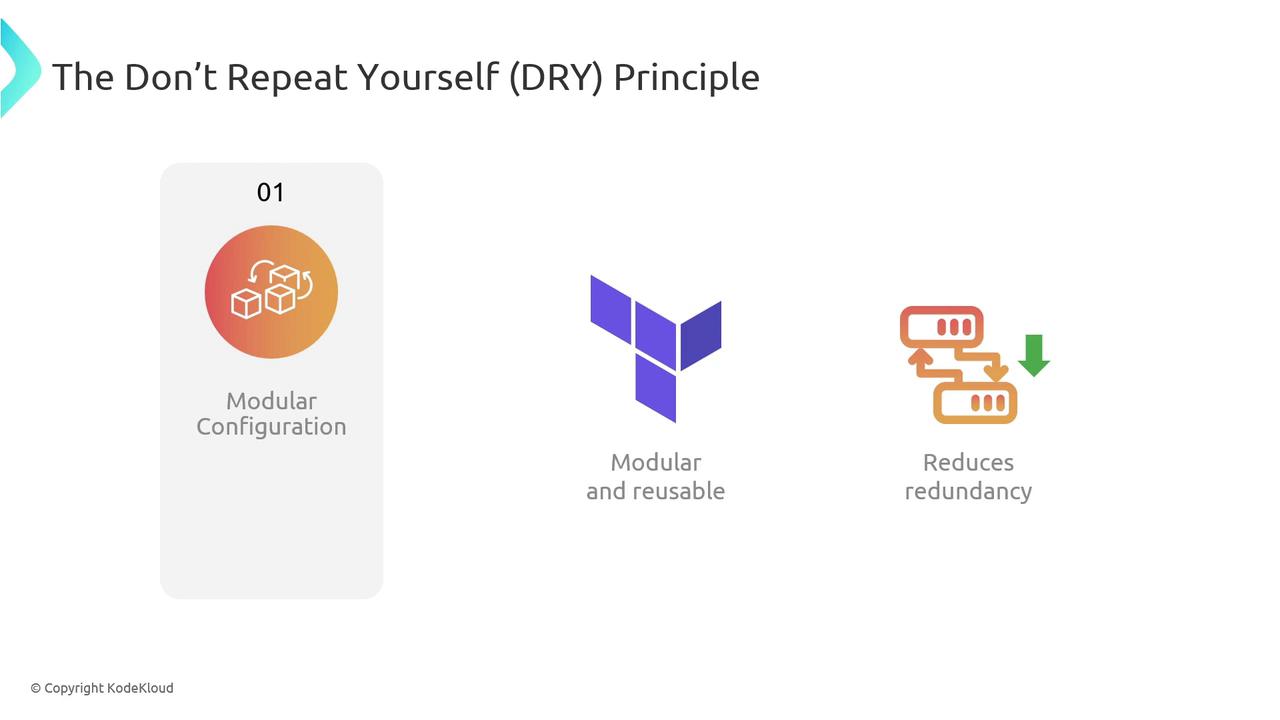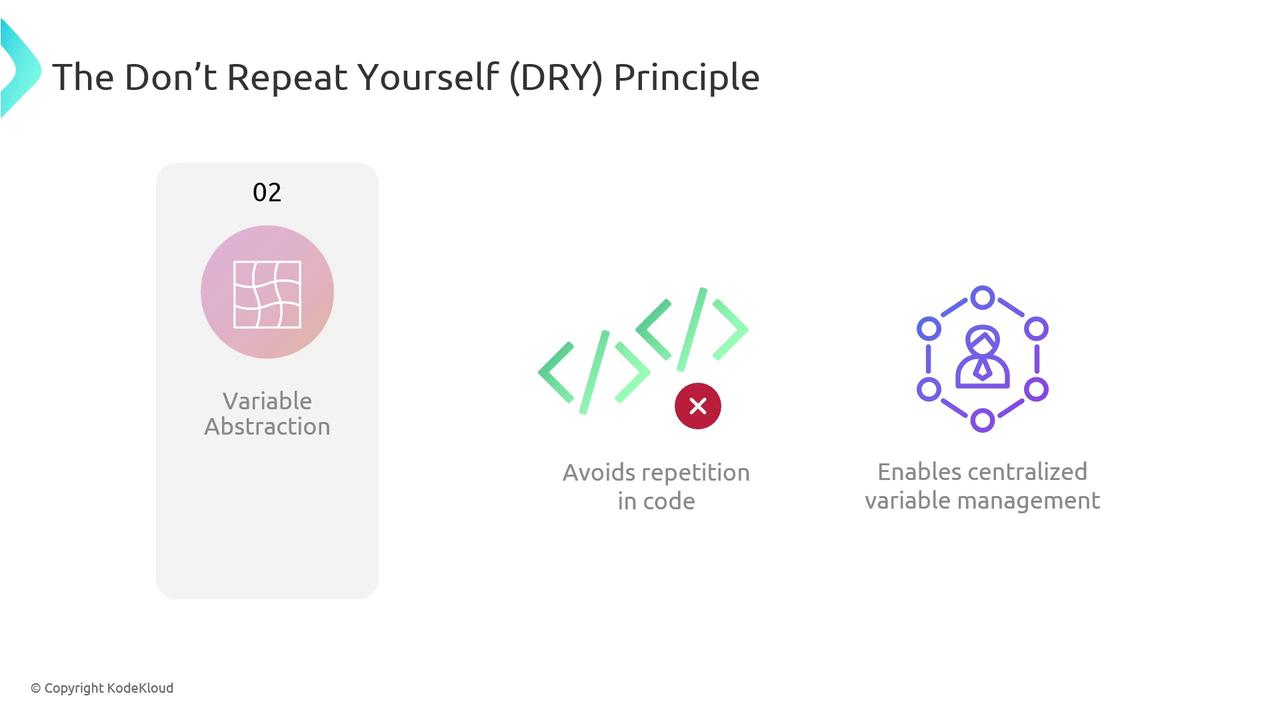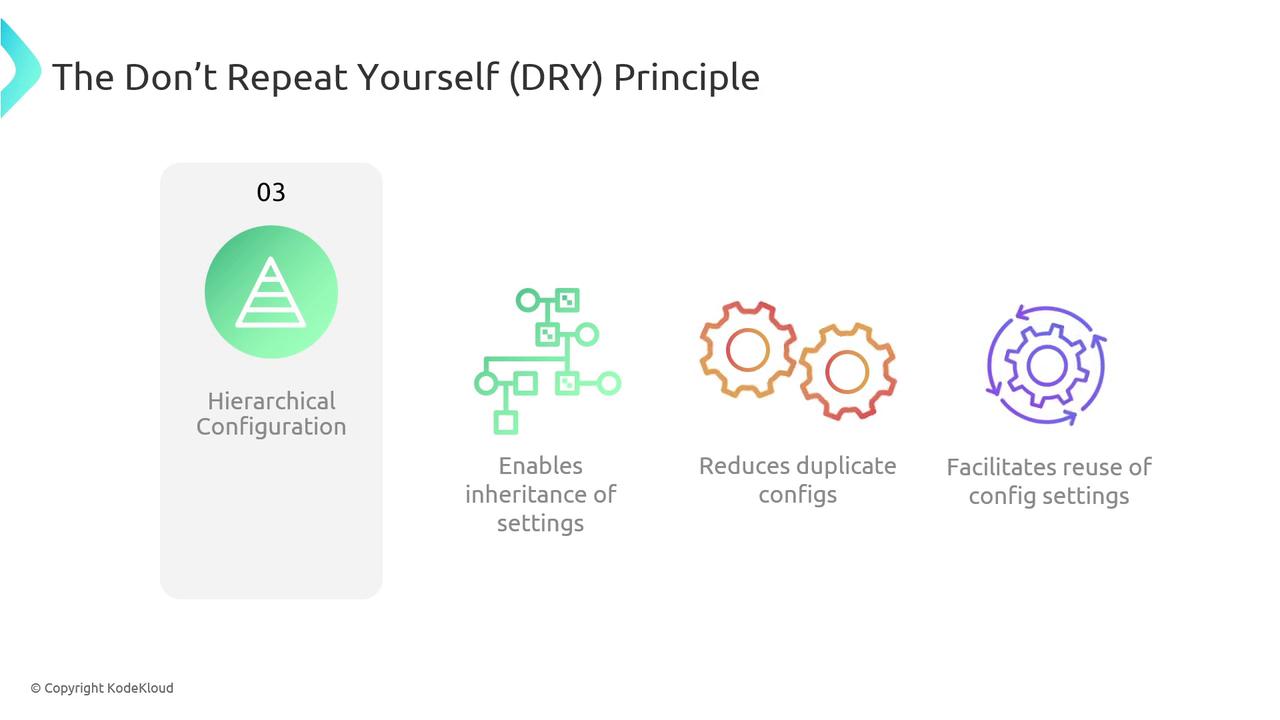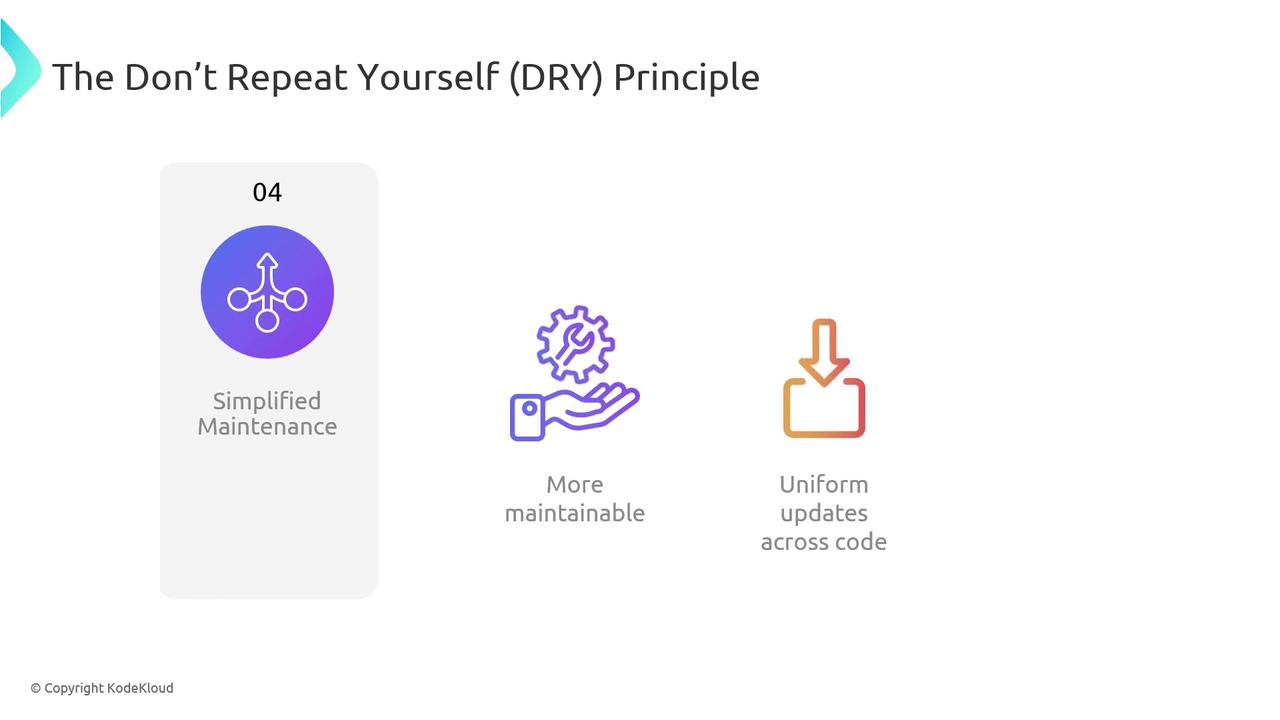Terragrunt for Beginners
Terragrunt Basic Concepts
The DRY Principle
In Infrastructure as Code (IaC), the DRY (Don’t Repeat Yourself) principle is essential for creating modular, maintainable, and scalable configurations. Terragrunt extends Terraform by enforcing DRY across your codebase. In this guide, you’ll learn how to:
- Structure reusable modules to eliminate redundancy
- Centralize and abstract variables for consistency
- Inherit shared settings through a hierarchical layout
- Streamline maintenance and promote changes safely
Note
This article assumes basic familiarity with Terraform and HCL. For a Terraform refresher, see Terraform Overview.
1. Modular Configuration
By encapsulating common resources in Terragrunt modules, you define infrastructure blocks once and reuse them across environments. This approach reduces code duplication and speeds up delivery.
Example module call in your environment folder:
# live/prod/app/terragrunt.hcl
include {
path = find_in_parent_folders()
}
terraform {
source = "git::ssh://[email protected]/your-org/terraform-modules.git//app?ref=v1.2.0"
}
inputs = {
instance_count = 3
instance_type = "t3.medium"
}

2. Variable Abstraction
Terragrunt centralizes variable definitions into shared files, preventing hard-coded values and scattered overrides. Reuse a single variables.hcl across modules:
# live/common/variables.hcl
locals {
project_name = "MyApp"
region = "us-east-1"
tags = {
Environment = read_terragrunt_config(find_in_parent_folders("env.hcl")).inputs.environment
Project = local.project_name
}
}
Then reference it:
# live/prod/app/terragrunt.hcl
dependency "vars" {
config_path = find_in_parent_folders("common")
}
inputs = merge(dependency.vars.outputs, {
service_port = 8080
})

3. Hierarchical Configuration Inheritance
Terragrunt’s directory structure supports inheritance of configuration blocks. Define global settings at the root, then override or extend them in child folders:
# live/terragrunt.hcl (root)
remote_state {
backend = "s3"
config = {
bucket = "my-tf-state"
key = "${path_relative_to_include()}/terraform.tfstate"
region = "us-east-1"
}
}
# live/prod/terragrunt.hcl
include {
path = find_in_parent_folders()
}
inputs = {
environment = "production"
}

4. Simplified Maintenance and Promotion
With DRY in place, updating modules or variables in one location propagates changes everywhere they’re used. This reduces configuration drift, lowers the risk of errors, and accelerates promotions across dev, staging, and prod.
| Benefit | Description | Example Change |
|---|---|---|
| Single Source of Truth | One module or file manages multiple environments | Bump AMI ID in module repository |
| Consistent Environment Tags | Central tags applied automatically across all deployments | Add CostCenter tag in variables.hcl |
| Rapid Rollout | Apply changes once and run terragrunt apply-all | Security patch update |
| Reduced Human Error | Fewer manual edits across multiple HCL files | Fix input typo in shared file |

Links and References
- Terragrunt Documentation
- Terraform Registry
- Infrastructure as Code Best Practices
- HCL Language Reference
Watch Video
Watch video content